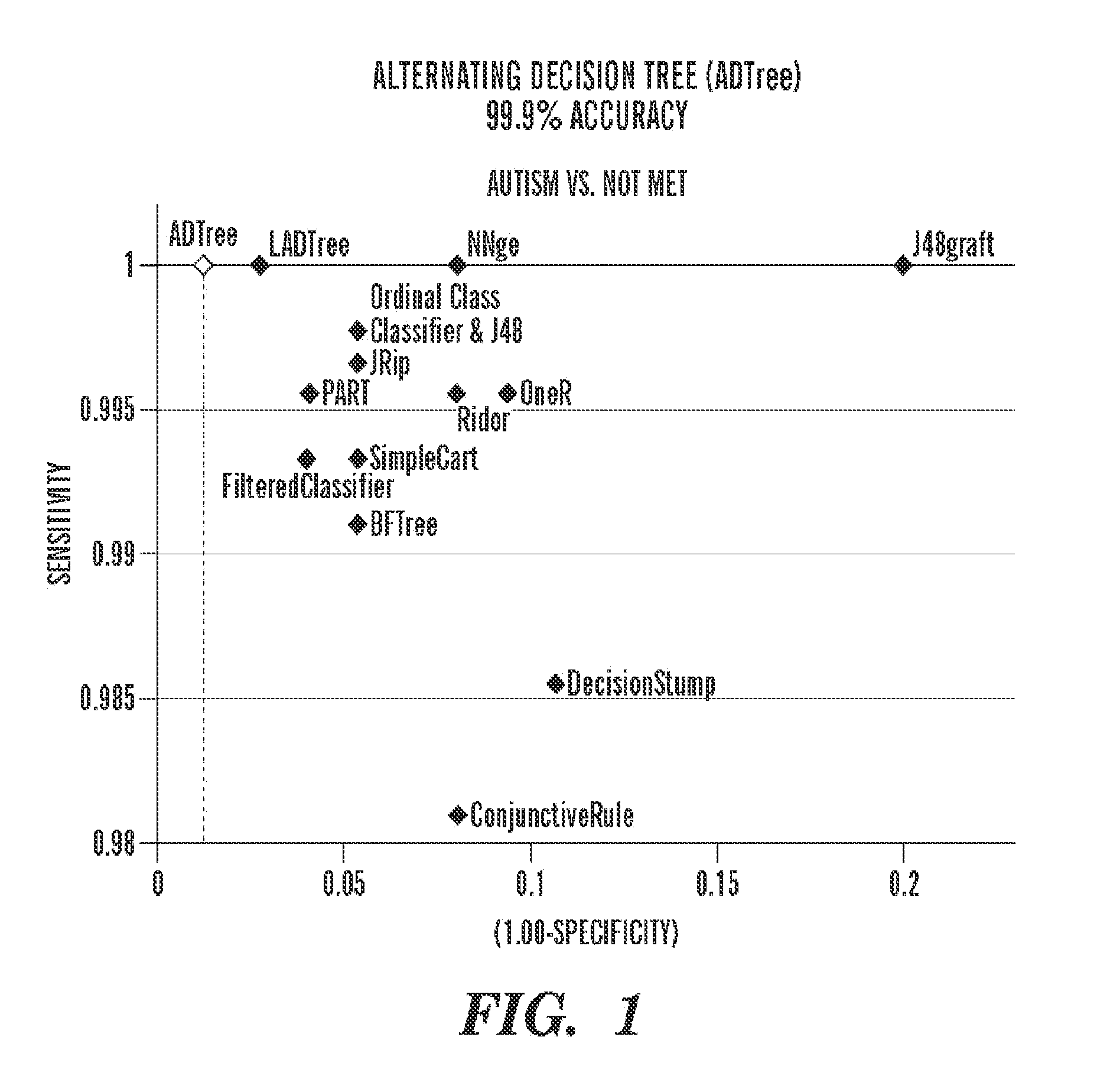Enhancing diagnosis of disorder through artificial intelligence and mobile health technologies without compromising accuracy
a mobile health and disorder technology, applied in the field of enhancing the diagnosis of disorder through artificial intelligence and mobile health technologies without compromising accuracy, can solve the problems of cumbersome diagnosis process as a whole, long behavioral exams currently used for diagnosis, and difficult to obtain known methods of assessment and diagnosis of mental disorders, so as to achieve positive impact and improve access
- Summary
- Abstract
- Description
- Claims
- Application Information
AI Technical Summary
Benefits of technology
Problems solved by technology
Method used
Image
Examples
example 1
[0526]The 7 questions and answer choices. The answers to these 7 questions become the input to the classifier described in FIG. 27. According to the invention, these questions and the answers are preferably understood and answerable by the parent or caregiver without input or assistance by a clinician and within the framework of a web-based or smart device-based user interface.
[0527]1. How well does your child understand spoken language, based on speech alone? (Not including using clues from the surrounding environment) (comps1)
[0528]Further Consideration[0529]Can you send her / him into another room to get something like her / his shoes or blanket?[0530]What about your purse or a book?[0531]Could s / he deliver a simple message?[0532]Does s / he understand if you say “no” without gesturing or raising your voice?[0533]How about “yes” or “okay”?[0534]How about names of favorite foods or toys or people in your family?[0535]Do you think s / he understands 10 words? 50?
[0536]Answer according to t...
example 2
[0610]The present invention includes a python function to implement the caregiver-directed classifier represented in FIG. 27 given answers to all (or a majority (at least 4)) of the questions listed in Example 1. An example of code of the python function is provided in Appendix 1.
[0611]FIG. 28 is a pipeline for generating a classification score using the caregiver-directed classifier (CDC). A caregiver interacts with a system (website, smart device application, etc.) to answer the questions according to the invention (Example 1), the answers to these questions are transformed into a discrete numerical vector and delivered as input to the CDC (FIG. 27) to generate a score that is then plotted within a distribution of scores to create a preliminary impact report that can be used in the process of diagnosis a person with (or without) Autism Spectrum Disorder.
[0612]An example of workflow for the CDC is shown in FIG. 38. The CDC can have the following steps: a caregiver answers a questio...
example 3
[0614]The 8 questions and their answer choices. The answers to these 8 questions become the input to the classifier described in FIG. 5. According to the invention, these questions and the answers are preferably understood and answerable by a video analyst (trained by the training materials according to the invention) without input or assistance by a clinician. The questions were also designed to be readily answered via examination of the subject in a short (2-15 minute) video and within the framework of a web-based or smart device-based user interface. However, the questions could be answered via other means of observation, including direct observation of the child.
[0615]A2: Frequency of Vocalization Directed to Others
[0616]This item is coded for the amount of socially-directed vocalization
[0617]0=Directs vocalizations to caregiver or other individuals in the video in a variety of contexts. Must include chatting or vocalizing to be friendly or to express interest, and / or to make ne...
PUM
 Login to View More
Login to View More Abstract
Description
Claims
Application Information
 Login to View More
Login to View More - R&D
- Intellectual Property
- Life Sciences
- Materials
- Tech Scout
- Unparalleled Data Quality
- Higher Quality Content
- 60% Fewer Hallucinations
Browse by: Latest US Patents, China's latest patents, Technical Efficacy Thesaurus, Application Domain, Technology Topic, Popular Technical Reports.
© 2025 PatSnap. All rights reserved.Legal|Privacy policy|Modern Slavery Act Transparency Statement|Sitemap|About US| Contact US: help@patsnap.com



